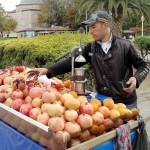Writer as Artist
The Writer as Artist
Creativity and format shape the writer’s work. The story depends on the ideas the writer brings to the page. The rules of English composition, grammar and punctuation affect readability. How frustrating. If only I could transmit ideas to the reader without paying attention to the rules.
A comparison of writing to painting is worthwhile. I have had the good fortune to learn the visual arts, photography and painting. My fifth grade art teacher, after a year of seeing my drawing and painting, said that I shouldn’t continue with art. I believed her until later in life when photography, then painting, held my interest. Her words still lived in my mind until I discovered that talent wasn’t required for art. One had to learn the rules and apply the lessons. Practice, in my case, did not lead to perfection—but it brought me a heck of a lot closer.
I realized that the images I sought to portray depended on attracting and holding the viewer’s attention through the use of colors, values, contrast and composition. Easy to say, but hard to do. You must give yourself over to the medium. Why do artists do that? Above all, they want to communicate an idea. For the devoted among us, the journey may lead down the path to mastery.
Everyone has access to paper and pencil, but not everyone will be an artist. Some will be dilettantes, having a superficial interest that culminates in a hobby.
What makes the writer an artist? I believe it’s the individual’s dedication to the process of fusing creativity with structure and understanding what appeals to the audience—peppered with inspiration.
We sort ourselves out. Nobody says who can be or can’t be an artist or a writer. No license required. But, in the end, we know.


